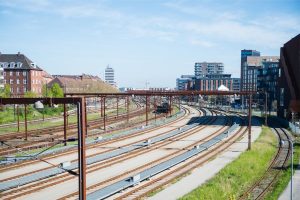Rail inspection is the practice of examining rail tracks for flaws that could lead to catastrophic failures. According to the United States Federal Railroad Administration Office of Safety Analysis, track defects are the second leading cause of accidents on railways in the United States.
 When it comes to rail defects, out of sight certainly is not out of mind — what you don’t know can hurt you. To that end, a number of track inspection equipment and service suppliers have railway imaging systems that come equipped with high-resolution cameras, and advanced image processing algorithms that can operate day or night, and deliver comprehensive track inspection, and evaluation.
When it comes to rail defects, out of sight certainly is not out of mind — what you don’t know can hurt you. To that end, a number of track inspection equipment and service suppliers have railway imaging systems that come equipped with high-resolution cameras, and advanced image processing algorithms that can operate day or night, and deliver comprehensive track inspection, and evaluation.
These systems can be used for:
- Joint bar inspection
- Track component imaging
- Rail surface imaging
- Driver view imaging
- Overhead wire (Caternary) imaging
- Tunnel wall imaging
- Thermal imaging
These different railway imaging systems are designed to help railroads and transit agencies test and inspect the tracks. The equipment used continues to advance. When lives are on the line, there is no margin for error. Designing equipment such as the above, requires complete accuracy. Universe Optics is committed to providing precision lenses to deliver the most detailed image possible.
An autonomous inspection system operates uninterrupted, more frequently, and without onboard operators on passenger and freight cars for cost-effective maintenance planning, and to hold to the railway standards of compliance.
There are:
- Vehicle/track interaction monitors – they monitor the track in real-time, and also inspect the conditions of the vehicle.
- Autonomous track geometry measuring systems – measures and creates reports that track geometry exceptions, including gage, warp, crosslevel, twist, alignment, and surface to meet FRA safety standards.
- Track inspector tools – assist in accurately knowing the location and condition of track assets from the condition of the track to location of the train for efficient maintenance, safer operations, and cost savings through reliable data management.
Automation and technology will continue to make railway imaging systems more advanced, and in turn keep the railways safer.